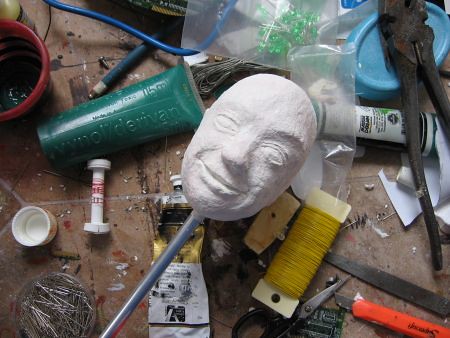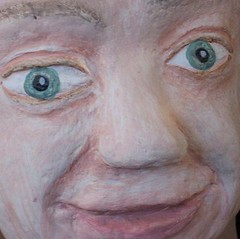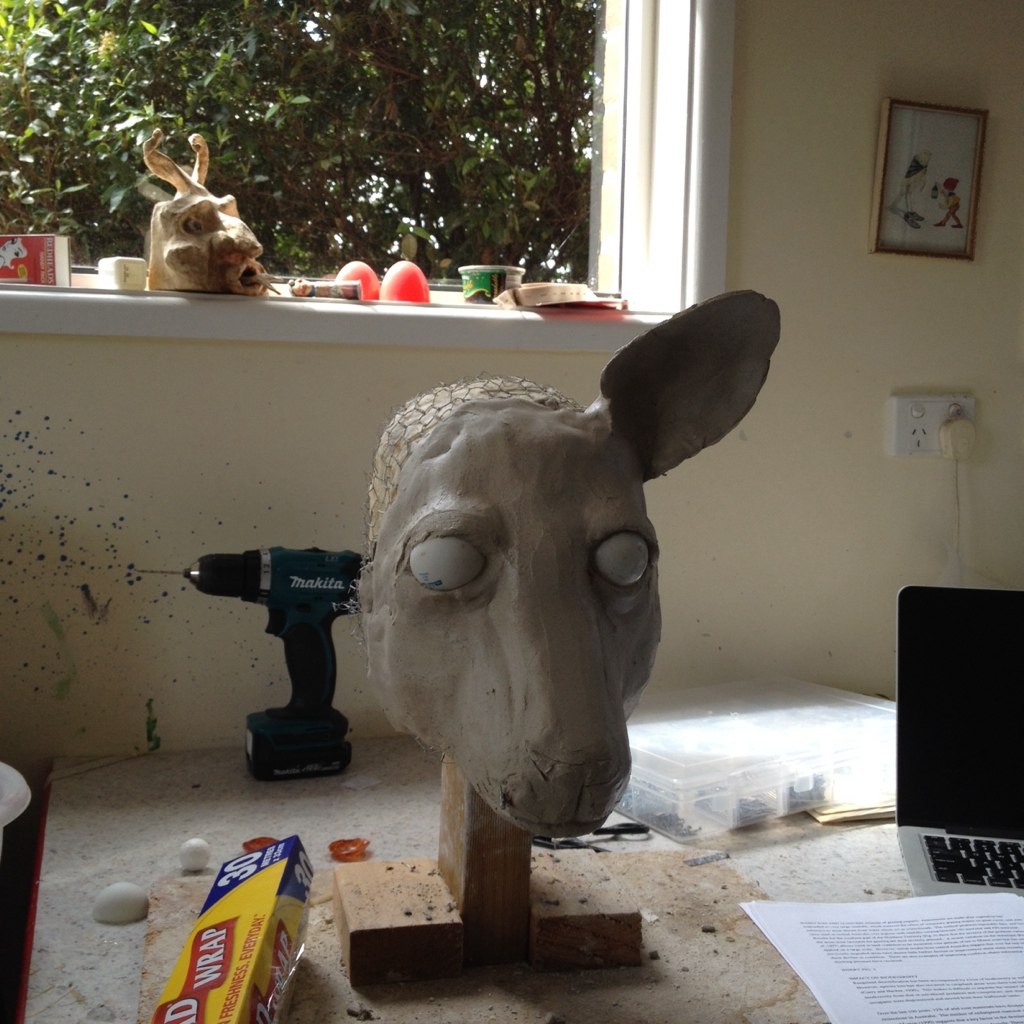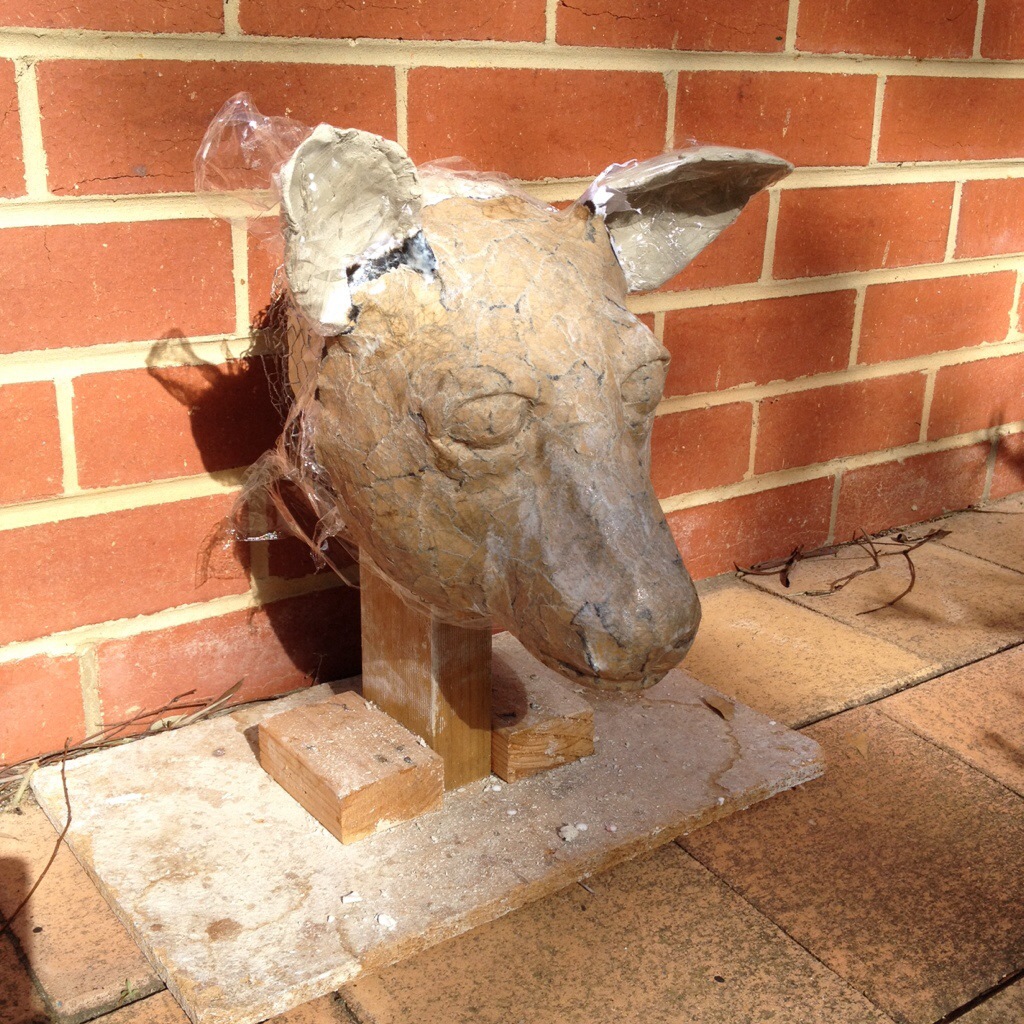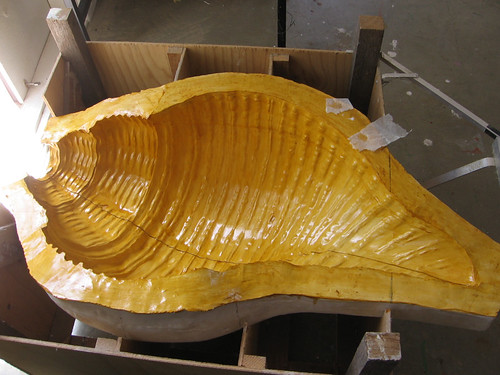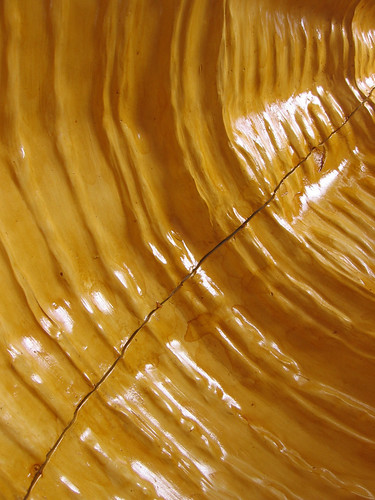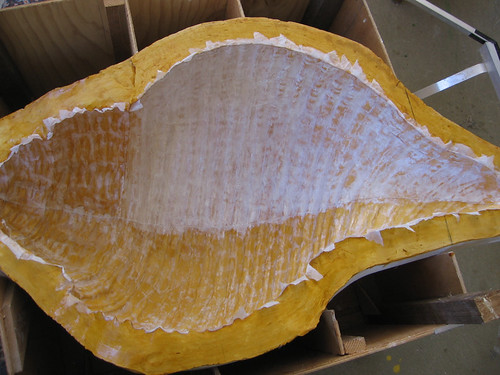Today I’ve been making a kangaroo mask. This is for the Biami production I blogged about yesterday. I decided to use paper mâché even though it’s a little time consuming. For something fairly small like this it’s fine, and I am pretty quick. I like doing paper mâché very much and find it meditative. I’m not sure on the final finish yet – fur or felt?
paper mache
Working on a shell
I’ve promised myself to try to focus more on projects of my own, in between contract work for other people. I find it so easy to fritter time away when I’m not meeting other’s deadlines. So I’ve started back working on a big shell project I first started over 3 years ago. Back then I got as far as sculpting the shell out of clay, and making a ridiculously big and heavy plaster mold of it. It’s about a metre long. Luckily I did have the sense then to make a cradle on casters for it, so I don’t break my back trying to maneuver is around.
A few days ago I sealed the plaster with layers of shellac, which turned it this beautiful golden mustard colour.
Now I am paper mache-ing it inside with tissue paper. I want it to look flimsy and papery and almost transparent, but I don’t know how few layers I can get away with, and still have it come out of the mold intact. The idea of using very fine fibreglass is tempting, but I am sworn off working with fibreglass.
There are a few more photos at Flickr, where I’m making a photoset.
Ronnie Burkett’s Paper Mache Recipes and other things
Having seen Ronnie Burkett‘s amazing Tinka’s New Dress in its last season at the Melbourne Festival in 2002, and heard him speak so inspiringly at the Puppetry Summit there at the same time, I was interested to see Burkett’s article on paper mache (via Puppetry News and Views).
The article talks about recipes for making one’s own paper mache pulp, and the various situations they are useful for, but Burkett also says that much of the time he now uses a commercial papier mache pulp called Celluclay. I thought it would be ideal for a court jester’s marrotte that I was making, but its hard to come by here, so I tried Mix-It, which is made in Victoria. When I tried an instant paper pulp before many years ago, it was quite lumpy, but this mix turned out to be nice and smooth to work, and dried really hard and white.
